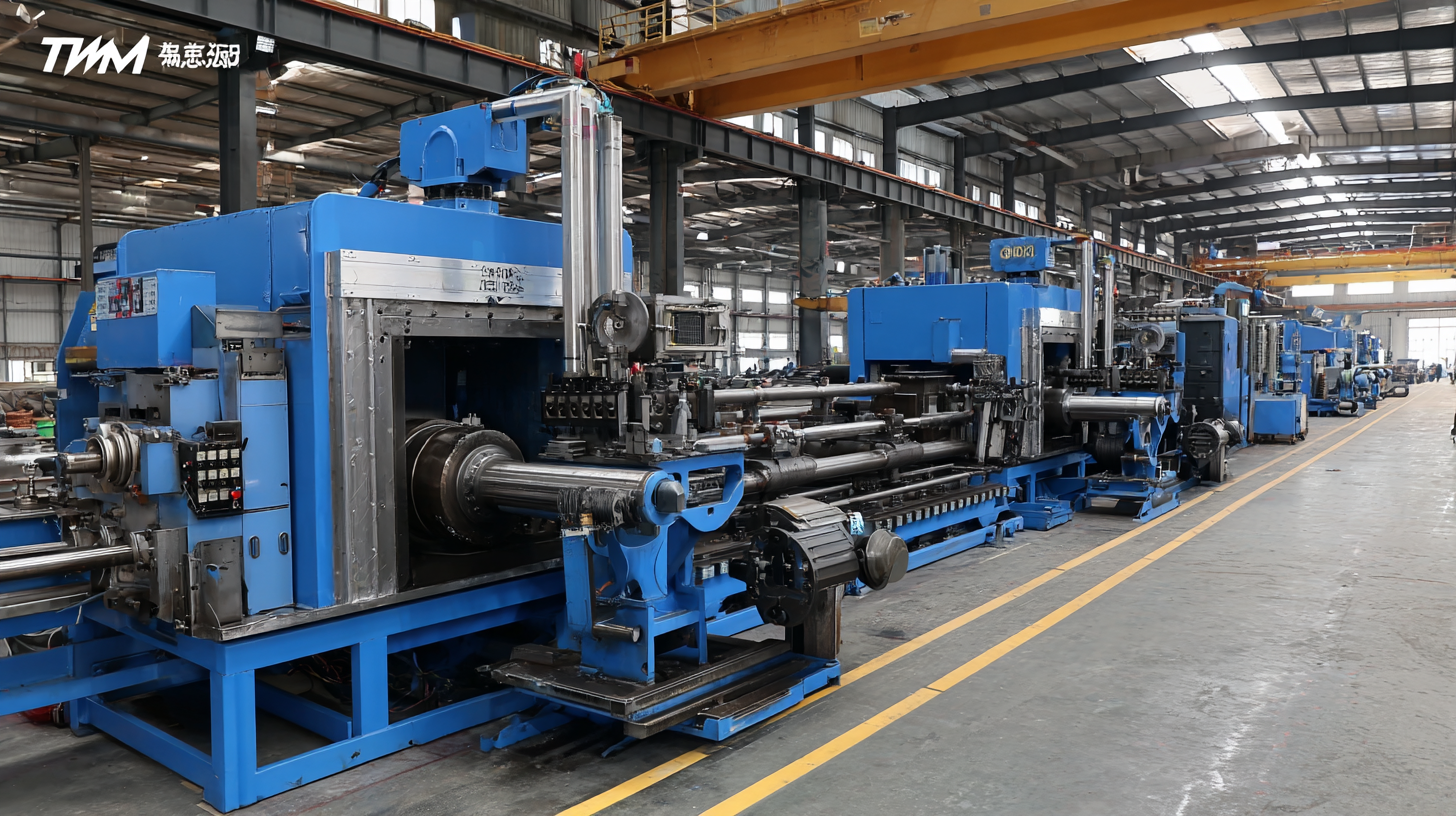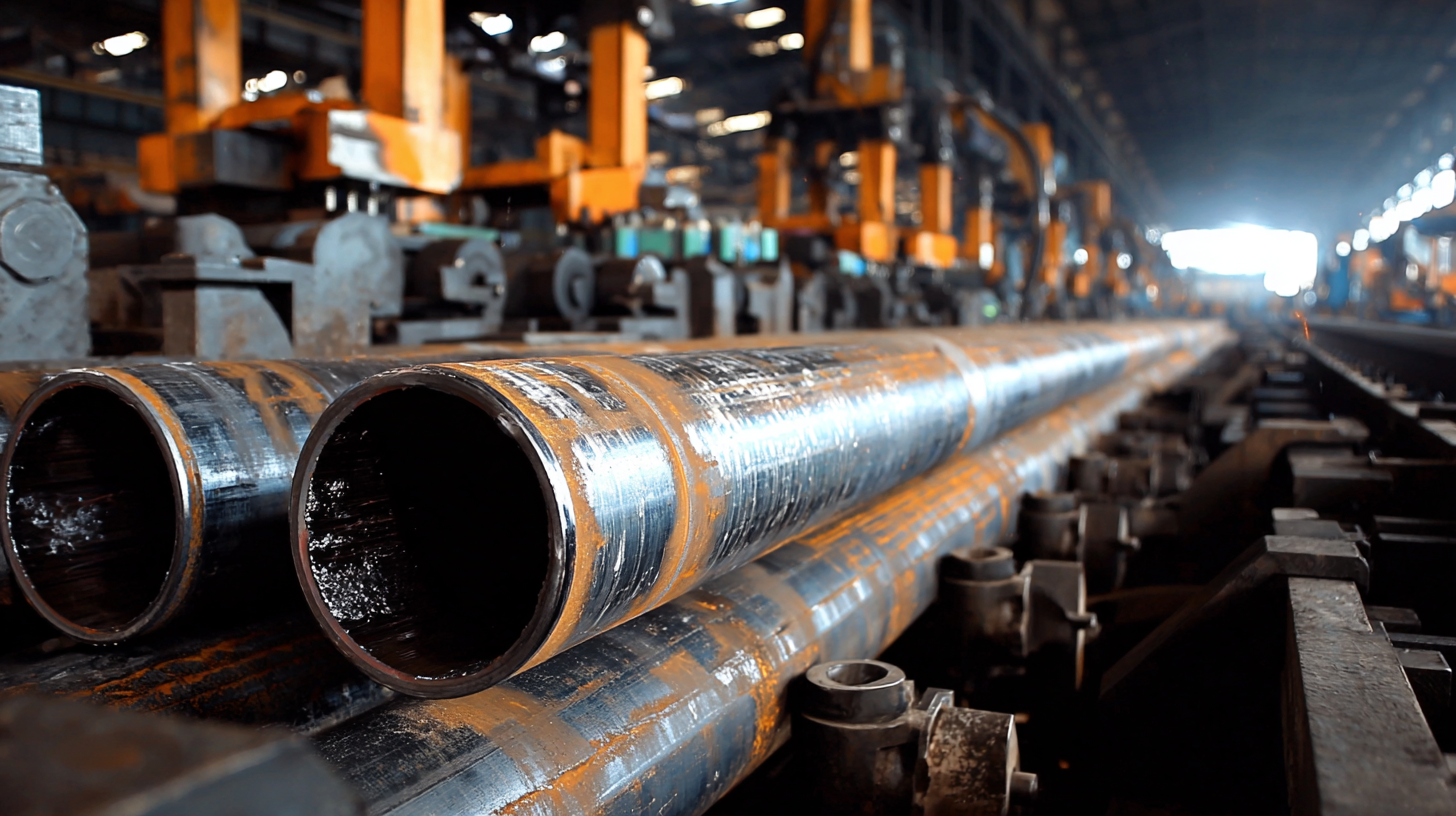
The steel pipe making machinery market is poised for significant growth in 2025, driven by advancements in technologies such as High Frequency Welded Steel Pipe Making Machinery. According to a MarketsandMarkets report, the global steel pipe market is expected to reach USD 150 billion by 2025, growing at a CAGR of 6.5% from 2020. As the demand for durable and high-quality pipes increases across various industries, including construction and infrastructure, manufacturers must adapt by leveraging cutting-edge technologies. High frequency welding, known for its efficiency and cost-effectiveness, plays a critical role in meeting rising production demands while maintaining product integrity. This blog will explore how to select high-quality manufacturers in this competitive landscape, while also offering a comparison of different production technologies to help businesses make informed decisions.

As we approach 2025, the steel pipe manufacturing sector is witnessing significant transformations driven by technological advancements. One of the most prominent trends is the adoption of high-frequency welding technology, which enhances the efficiency and quality of steel pipe production. This innovative approach not only improves weld strength but also reduces manufacturing time, allowing companies to meet increasing market demands while maintaining cost-effectiveness.
Furthermore, the emerging trends indicate a strong shift toward sustainability within the steel pipe manufacturing industry. Many companies are exploring methods to minimize waste and energy consumption throughout their production processes. As the emphasis on eco-friendly manufacturing intensifies, businesses that adapt quickly and integrate green technologies will likely gain a competitive edge in the market. This evolving landscape necessitates that manufacturers stay informed about these trends and leverage new technologies to not only enhance their production capabilities but also align with global sustainability goals.
This chart illustrates the projected market growth for high frequency welding technology in the steel pipe manufacturing sector, highlighting the increasing demand and adoption rates from 2023 to 2025.
High Frequency Welding Technology has emerged as a game changer in the steel pipe manufacturing industry, providing a streamlined approach that enhances both efficiency and quality in production processes. By utilizing high frequency electromagnetic fields, this technology facilitates the rapid and consistent welding of steel pipes, minimizing the risks of defects often associated with conventional welding methods. This not only speeds up production times but also ensures that the finished products meet stringent quality standards, making them more competitive in the market.
The adoption of high frequency welding technology also allows manufacturers to optimize their operations further. With improved automation and precision, companies can reduce material waste and energy consumption, translating to significant cost savings over time. Furthermore, as the demand for high-quality steel pipes rises, integrating this advanced welding technology positions manufacturers to respond effectively to market trends, ensuring they remain leaders in a competitive landscape. As we move towards 2025, investing in high frequency welding technology will be crucial for businesses aiming to thrive in the evolving steel pipe machinery market.
The global demand for steel pipes is set for remarkable growth, illustrated by statistical projections that reveal a dynamic shift in market trends. As industries evolve, the need for durable and reliable steel pipes has increased significantly, particularly in sectors such as oil and gas, construction, and infrastructure development. By 2025, it's anticipated that the stainless steel welded pipe market will soar to a value of approximately USD 8.9 billion, reflecting a robust transformation in resource allocation and technological advancements.
In parallel, the carbon steel tubing market, especially within oil and gas lift applications, is projected to experience substantial expansion from 2025 to 2035. As energy demands rise and infrastructure projects are initiated worldwide, the role of steel pipes as fundamental components in these operations cannot be overstated. High-frequency welding technology emerges as a vital player in enhancing production efficiency, ensuring superior product quality, and meeting the increasing demands of modern engineering requirements. This adaptation to high-tech methodologies not only streamlines operations but also fortifies the sustainability credentials of the steel industry as it aligns with the global push towards net-zero emissions by 2050.
| Parameter | 2023 Estimate | 2024 Projection | 2025 Forecast |
|---|---|---|---|
| Global Steel Pipe Demand (Million Tons) | 150 | 160 | 170 |
| High Frequency Welding Market Share (%) | 25 | 27 | 30 |
| Projected Growth Rate (%) | 3.5 | 4.0 | 4.5 |
| Major Application Sectors (%) | Oil & Gas (40) | Construction (30) | Water Supply (20) |
| Emerging Markets Growth (%) | 5.0 | 6.0 | 7.0 |
In the quest to enhance manufacturing quality, Chinese industry leaders have been setting standards that resonate well beyond their borders. As companies look to leverage high frequency welding technology, lessons gleaned from these leaders can provide invaluable insights. This technology, emblematic of China's rapid industrial advancements, enhances structural integrity and reduces production times, making it a vital consideration for steel pipe manufacturing.
However, implementing these strategies requires a keen understanding of both technological and market dynamics. The success of "Made in China 2025" underscores the importance of innovation and adoptive strategies, allowing firms to be competitive in an increasingly globalized market. Moreover, as the world shifts towards sustainability, it’s critical for manufacturers to align their technological advancements with eco-friendly practices. Observing how Chinese manufacturers balance quality and sustainability can guide others in navigating their own manufacturing challenges effectively.

High frequency welding (HFW) technology is increasingly recognized for its competitive advantages in the global steel pipe manufacturing market. According to a recent report by Grand View Research, the global steel pipes market is expected to reach $137.42 billion by 2025, driven by the rising demand in industries such as oil and gas, construction, and manufacturing.
 HFW technology stands out due to its ability to produce high-strength, high-quality pipes at a faster rate compared to traditional welding techniques. This efficiency not only reduces manufacturing costs but also enhances product reliability, making it a preferred choice for industry leaders.
HFW technology stands out due to its ability to produce high-strength, high-quality pipes at a faster rate compared to traditional welding techniques. This efficiency not only reduces manufacturing costs but also enhances product reliability, making it a preferred choice for industry leaders.
Moreover, the adoption of HFW technology aligns with global sustainability efforts. The International Energy Agency (IEA) notes that efficient manufacturing processes can significantly lower greenhouse gas emissions, which is increasingly demanded by both regulators and consumers. With HFW, manufacturers can achieve tighter control over the welding process, which leads to minimal material wastage and energy consumption.
As the market evolves, companies leveraging HFW technology will not only meet the growing demand for quality steel pipes but will also position themselves as environmentally responsible participants in the global supply chain. This strategic advantage will be crucial for maintaining competitiveness in an increasingly crowded marketplace.
